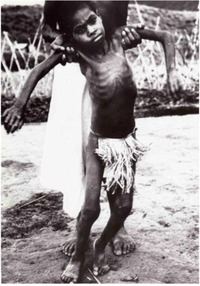
Photo from wikipedia
Human prion diseases are a group of rare fatal neurodegenerative diseases with sporadic, genetic, and acquired forms. They are neuropathologically characterized by pathological prion protein accumulation, neuronal death, and vacuolation.… Click to show full abstract
Human prion diseases are a group of rare fatal neurodegenerative diseases with sporadic, genetic, and acquired forms. They are neuropathologically characterized by pathological prion protein accumulation, neuronal death, and vacuolation. Classical immunological response has long been known not to play a major in prion diseases; however, gliosis is known to be a common feature although variable in extent and poorly described. In this investigation, astrogliosis and activated microglia in two brain regions were assessed and compared with non-neurologically affected patients in a representative sample across the spectrum of Creutzfeldt–Jakob disease (CJD) forms and subtypes in order to analyze the influence of prion strain on pathological processes. In this report, we choose to focus on features common to all CJD types rather than the diversity among them. Novel pathological changes in both glial cell types were found to be shared by all CJD types. Microglial activation correlated to astrogliosis. Spongiosis, but not pathological prion protein deposition, correlated to both astrogliosis and microgliosis. At the ultrastructural level, astrocytic glial filaments correlated with pathological changes associated with prion disease. These observations confirm that neuroglia play a prominent role in the neurodegenerative process of prion diseases, regardless of the causative prion type.
Journal Title: Pathogens
Year Published: 2021
Link to full text (if available)
Share on Social Media: Sign Up to like & get
recommendations!